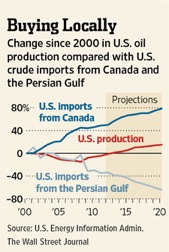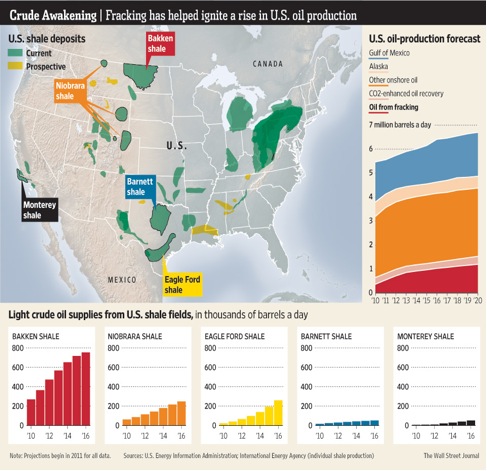The Energy Information Administration (EIA) released its Annual Energy Outlook for 2012 (AEO) this week. The AEO updates EIA’s reference case forecasts for regulatory changes and data changes that have occurred since it released its earlier version at the beginning of this year. The full outlook also contains 29 sensitivity cases that examine changes to the reference case assumptions to highlight the uncertainty that exists in projecting the energy future for the next 25 years.[i] In the updated reference case, the nation’s future looks roughly the same as it did in the early release version that IER summarized here.
- EIA still sees a fossil fuel future for the United States with fossil fuels representing 77 percent of energy consumption in 2035, compared to 82 percent in 2011.
- New EPA regulations cause coal-fired generation to decrease its share of electric generation from 42 percent in 2011 to 38 percent in 2035, with increased shares from natural gas-fired and renewable generation.
- Natural gas production increases by over 6 trillion cubic feet in the 25-year projection period thanks to hydraulic fracturing technology with the United States becoming an exporter of liquefied natural gas and a net natural gas pipeline exporter.
- Similarly, oil production from onshore lands, mainly privately owned, increases by over a million barrels per day by 2020, helping to reduce oil imports from a 45 percent share in 2011 to a 36 percent share by 2035. Like natural gas, this increase is due in large part to shale formations that are accessed with hydraulic fracturing.
- Energy demand is expected to increase slowly at just 0.3 percent per year due to a slow economic recovery, higher energy prices, and greater energy efficiency in end-use technologies.
- Energy-related carbon dioxide emissions remain below 2005 levels through 2035.
Crude Oil and Petroleum
According to EIA, by 2020, nearly half of the crude oil the United States consumes will be produced at home, and 82 percent is expected to come from this side of the Atlantic. Government forecasters expect that U.S. petroleum purchases from the Middle East, Africa, and Europe will fall to about 2.5 million barrels a day by 2020, from more than 4 million barrels today. Oil imports from the Persian Gulf’s OPEC members are expected to drop to 860,000 barrels a day in 2020—about half of their current level. Even OPEC predicts that oil shipments from the Middle East to North America “could almost be nonexistent” by 2035.[ii]
EIA’s estimates are backed up by data from IHS Cambridge Energy Research Associates (IHS CERA). IHS CERA calculates that between 2003 and 2011, oil and gas investments nearly quadrupled in the Western Hemisphere. Due to greater political stability in the Americas, 48 percent of global oil investment ($320 billion) occurred here in 2011, compared to 39 percent in 2003.
North Dakota surpassed Alaska earlier this year to become the nation’s second largest state oil producer, exceeded only by Texas. North Dakota developed its Bakken Shale formation through the use of hydraulic fracturing and horizontal drilling technology. Average U.S. daily production of crude oil increased 6 percent between October 2011 and March 2012 spurred by production of shale oil from the Bakken and the Eagle Ford shale formation in Texas. In November 2011, U.S. oil production was over 6 million barrels per day for the first time since 1998.
EIA’s updated energy outlook finds that tight oil found in low-permeability reservoirs such as shale and chalk formations is the largest new source of U.S. supply since the offshore Gulf of Mexico was developed. Production of tight oil is expected to more than double over the next two decades. Production from eight tight oil prospects is expected to reach 1.23 million barrels per day by 2035, more than double their 2011 levels. In 2012, tight oil output is expected to reach 720,000 barrels per day, or 12.5 percent of domestic production.[iii]
The new energy outlook also finds that total U.S. oil production is expected to peak at 6.7 million barrels per day in 2020, the highest since 1994 with about 18 percent coming from tight oil. In 2035, EIA expects tight oil to account for 20.5 percent of the 5.99 million barrels per day of total oil it expects to be produced in the United States. Tight oil production is expected to reach its peak in 2029 at 1.33 million barrels per day.

